MAP Website en Español haga clic aqui FEATURED STORY
Support the documentary “Living with Bees” and support a global community
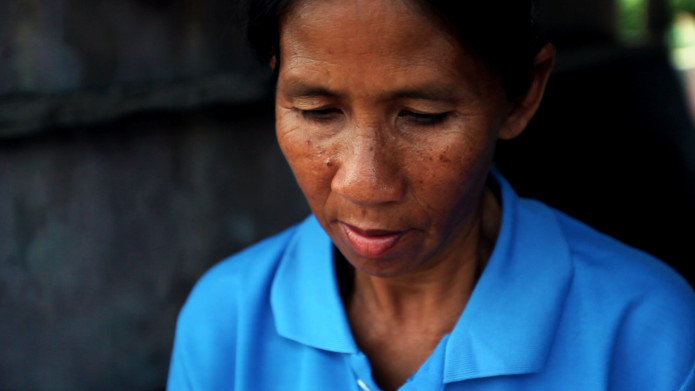
THAILAND – Meet our brilliant main character for the film, Khun Nit, who lives on her own, in a village on the island of Koh Klang, on the Andaman Coast. She lives right next to the sea and has had to move her home further inland 5 times over 500 metres to avoid losing her home to the sea! Incredibly, she also lives with bees embedded into her stilted home. She is a determined individual, with a passion for protecting mangroves and encouraging women to take on new skills. This is the story of Khun Nit, told through her voice, and you will be immersed into her world. Your support will make this film possible which would not only raise awareness on a very important mangrove project but will also shed light on the importance of empowering women to work in conservation. The ultimate aim of the project is to make a short film that will leave a positive impact on the local people and help create a network of ‘mangrove bee villages’ with other coastal communities along the Andaman Coast of Thailand. This story has emerged directly from a community that have themselves realised the need for mangrove conservation and to look after bees. The film gives the communities a platform to voice this community-based conservation solution, so that others can follow the way of nature, rather than go against it. Let’s tell and spread this positive story together!Help us to spread the word to everyone you know. This is your chance to share the project to make a lasting difference. If you wish to collaborate and sponsor special equipment, services, your photographs or artwork for the film, we’d love to discuss this with you. Post with the hashtag #LivingWithBees to share this project and to tell us what you think about this. READ MORE GLOBAL Geographer associates cyclones and mangrove health in new study
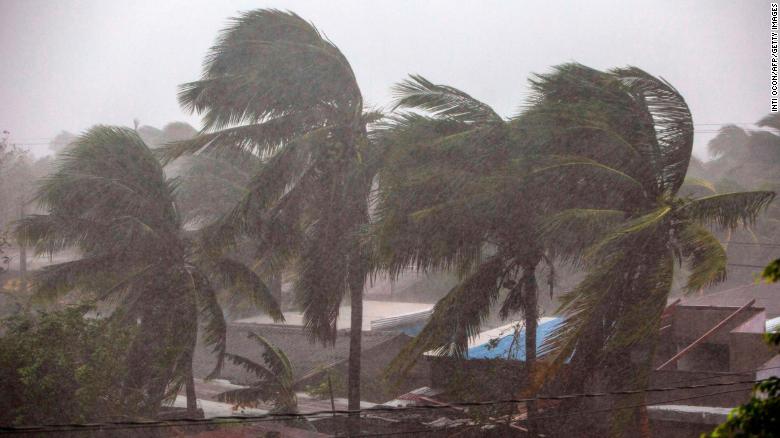
GLOBAL – Dina Rasquinha, doctoral candidate in the Franklin College of Arts and Sciences’ geography department, discussed her new research into mangrove health with Phys.org. Rasquinha has been looking into how cyclones and other weather events might impact mangrove forest health. “Cyclones and storm events in the last two decades show a net positive effect on long-term mangrove carbon assimilation abilities across the Indian subcontinent,” she said. This means that storms are helping mangroves to take in more carbon from the atmosphere, and this can be explained by storms bringing in more nutrients to the trees to help them grow. “Storm-induced nutrient fluxes and freshwater supply play a crucial role in influencing productivity gradients in mangroves,” Rasquinha explained. While the research shows a positive effect of the storms so far, there is a chance that increased storm severity might prevent the benefits from being maintained. READ MORE AFRICA Kenyans heal devastated land with the power of mangroves

KENYA – Along a riverbank scarred by logging, Joseph Mwandenge Mangi points out a solitary mangrove tree, a species once abundant in the forest where the mighty Sabaki River meets the sea. “This is the last one. There are no more left,” said the 42-year-old Kenyan, who grew up on the estuary and possesses a seemingly encyclopedic knowledge of its flora and fauna. The surviving tree is a sombre reminder for local communities working to restore this critical ecosystem to health, and make amends for the plunder of the past. For generations villagers living near the Sabaki estuary had relied on its natural bounty for lumber and firewood, fresh water, seafood, farming land, and plants for traditional medicine. Sustainably nurtured, the coastal wetland is also a resilient ally in the face of a changing climate — storing carbon, filtering water pollution, and protecting against extreme weather and rising sea levels. But years of unchecked exploitation inflicted terrible damage on the mangroves, mudflats, freshwater pools and sandy dunes at the mouth of Kenya’s second-longest river. READ MORE Africa’s forest cover drops despite greater efforts to save trees
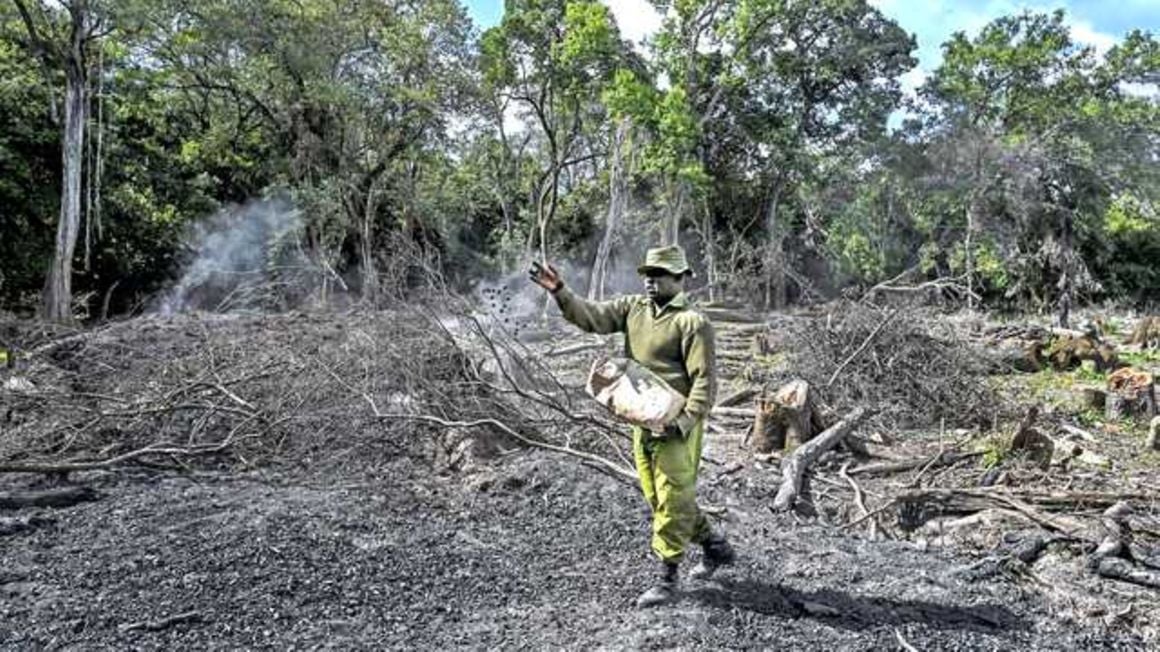
AFRICAN CONTINENT – Forest cover in Africa is decreasing in spite of heightened awareness on their importance to climate. The losses from deforestation and widespread degradation are intensifying carbon loss from Africa’s tropical forests. According to Marie Avana-Tientcheu, the African Forest Forum’s (AFF) senior programme officer at the people and climate change programme, Africa had the largest annual rate of net forest loss between 2010 and 2020, at 3.9 million hectares every year. In 2020, Africa had 636,639,000 hectares representing 16 percent of the world’s forested areas. Some 46.5 percent is in eastern and southern Africa, 48 percent in western and central Africa, and 5.5 percent is in northern Africa. Africa is the largest area with wooded land at 446 million hectares, including trees in urban settings, orchards, palms and agroforestry. However, Africa’s forests are exposed to several threats. READ MORE AMERICAS Learning How To Restore Mangrove Population
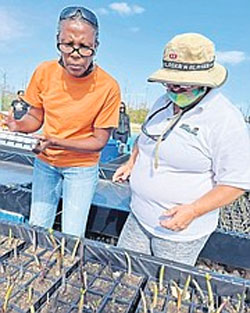
BAHAMAS – MANGROVE education and training is underway on Grand Bahama for some 30 participants at the Rand Nature Centre as part of a major Mangrove Restoration Project by Waterkeepers Bahamas and Earthcare Bahamas. The project – which is aimed at restoring the mangrove forests at Dover Sound – is being funded through a grant from the Bahamas Protected Areas Fund. The goal is to harvest and plant 30,000 mangrove propagules. The Mangrove Action Project (MAP), a well-known international mangrove conservation group, was brought in to conduct education and proper training for a week, which began on Monday. This is to ensure the successful mangrove restoration. According to Rashema Ingraham, executive director of Waterkeepers Bahamas, the mangrove restoration project with Earthcare Bahamas will be carried out in a phased approach. She said: “The first phase of this project is for 12 months, and it is funded under the Bahamas Protected Areas Fund, and that’s where we are looking at the collecting 30,000 (mangrove propagules). READ MORE The Caribbean mangrove forest that defied destruction
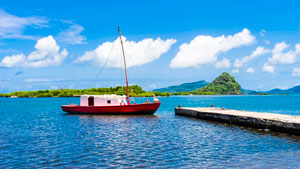
GRENADINES – On a sweltering summer day in 1994, an ancient mangrove forest on Union Island was ripped apart. A foreign investor had started the foundation work for a hotel, marina and golf course in Ashton lagoon on Union Island, one of the 32 Grenadine islands which dot the clear, blue waters of the southern Caribbean Sea. The sounds of birds chirping and waves crashing against the intricately woven roots of the mangroves was replaced by the noise of excavators and cement trucks, cutting the trees to make way for culverts and concrete pillars. Poorly-sized pillars collapsed, cutting off tidal flow in the 10-acre (4-hectare) lagoon. More mangrove trees began dying. The clear water turned putrid and yellow. And what was once the most ecologically diverse lagoon in the region became a barren eyesore and mosquito breeding ground. Less than a year after dredging began, the Valdetarro Construction Company declared bankruptcy. READ MORE Innovations in Climate Resilience: Restoring the World’s Mangrove Forests
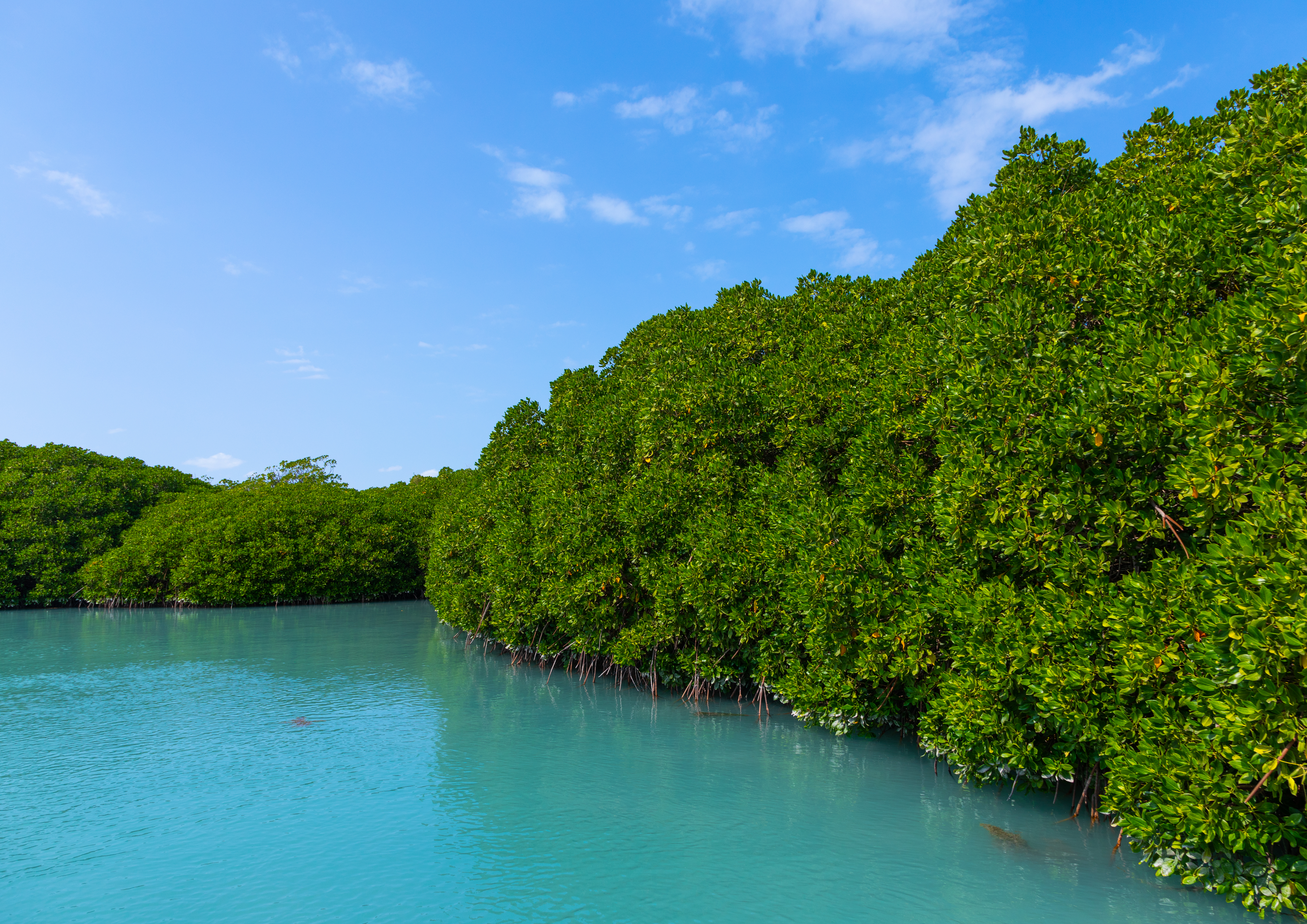
USA – On April 22, 2022 11:00 am – 12:00 pm via Zoom, Innovations in Climate Resilience will host a new event series by MEI’s Climate and Water Program. The series showcases different practical applications that address climate change vulnerability in the MENA region. Mangrove forests are a surprising superstar for conservation efforts globally. This cost-effective and low-maintenance “super tree” efficiently sequesters blue carbon and is a natural alternative for storing CO2. Blue Forest, a UAE-based ‘blue carbon’ specialist, is working to implement large-scale mangrove forest restoration world wide. Using technological innovations, Blue Forest seeks to rehabilitate and expand mangrove populations with the goal of sequestering 1 million tons of CO2 by 2024. They are already well on their way and their latest effort saw over 700,000 mangrove seedlings planted with a survival rate of 80%. Join Vahid Fotuhi, the founder and CEO of Blue Forest, and Mohammed Mahmoud, Senior Fellow and director of MEI’s Climate and Water Program, for a robust discussion on the future of Blue Forest, mangrove carbon sequestration, and innovative efforts to build climate resilience in the MENA region. REGISTER HERE Brevard Zoo to Give Away 150 Mangrove Trees in Honor of 150th Anniversary of Arbor Day

USA – Celebrate Arbor Day by adopting a free mangrove from Brevard Zoo as they give away 150 mangroves – both mature and juvenile – in honor of the 150th anniversary of Arbor Day. “Trees and plants are so important for keeping any ecosystem healthy,” said Jessica Lang, a conservation specialist. “Reestablishing mangroves in Brevard County is essential to restoring health of the Indian River Lagoon.” Future mangrove gardeners will be able to pick up their mangroves from 10 a.m. to 6 p.m. on April 29 in the Zoo’s parking lot at 8225 N. Wickham Road in Melbourne. READ MORE ASIA Facing Disastrous Floods, They Turned to Mangrove Trees for Protection

INDIA – The women adjusted their binoculars around their necks, secured their bright green saris and climbed onto a motorboat to begin their weekly patrol in the Sundarbans, one of the largest deltas in the world and an urgent case study on the effects of climate change. As sea levels rise, eroding embankments and pushing water closer to their doorsteps, the residents of the hundreds of villages in the Sundarbans — an immense network of rivers, tidal flats, small islands and vast mangrove forests straddling India and Bangladesh — have found their lives and livelihoods at risk. In the absence of much government support, women like Aparna Dhara, with help from a nonprofit environmental conservation organization, have devised their own solution: planting hundreds of thousands of additional mangrove trees to bolster their role as protective barriers. “Our land and livelihoods have been battered many times over by raging cyclones and unpredictable, heavy rains,” said Ms. Dhara, 30, as she and the other women in the boat discussed where they needed to plant more trees. READ MORE Like this newsletter?
Pease consider donating to MAP to keep it going.
Giving could never be easier  *Articles in this newsletter may mention practices being used and/or show exagerated results being claimed without proof. Stories are presented here in effort to show mangrove related activity around the world and do not necessarily reflect Mangrove Action Project’s views or mangrove restoration best-practices. | ACTION ALERTS
Stop this total madness Stop the biggest heated oil pipeline in the world — right through the heart of Africa!
CLICK HERE Strengthen 60 Women Farmers in El Salvador
DONATE HERE Stop construction work on a private port In Defense of the Quilombo Boca Do Rio TAKE ACTION! Tell Sumitomo to stop building polluting coal power in Bangladesh! TAKE ACTION!
Like this newsletter? Pease consider donating to MAP to keep it going. Giving could never be easier 
MAP Website en Español
haga clic aqui ORDER YOUR 2022 MAP CHILDREN’S ART CALENDER HERE
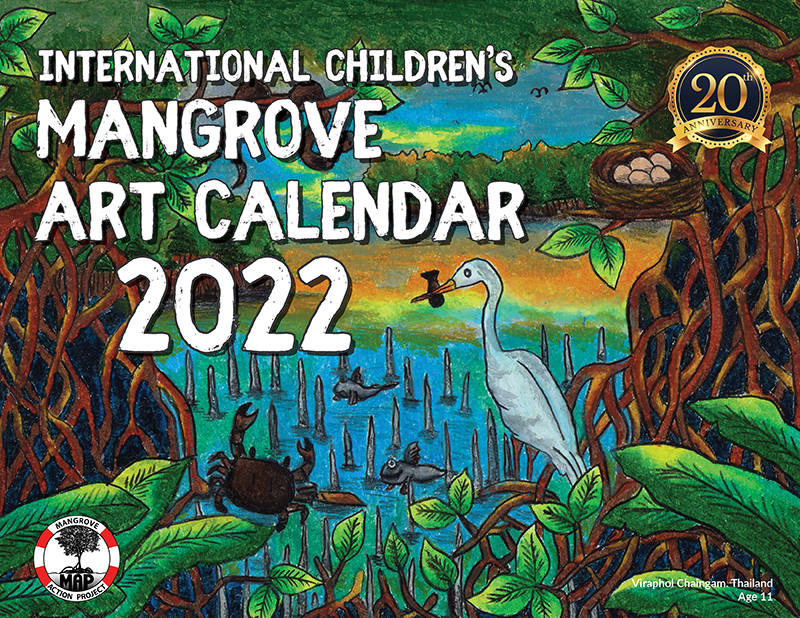 13 Year old Linda Li “Mangrove Adventure” from Kid Dream Art School

WATCH NOW 
Restoring The Natural Mangrove Forest
Watch movie

Community Based Ecological Mangrove Restoration in Rufiji Delta VIEW VIDEO
Video: Mangroves for the Future
View Here WANT TO GET INVOLVED?
Follow and Join MAP!    
Like this newsletter? Pease consider donating to MAP to keep it going. Giving could never be easier 

Interested in connecting or working with MAP? Check out our opportunities here 
MANGROVE ISSUES Want to learn more about mangroves?
Our short presentation will give you a better understanding of the issues we are working to solve. WATCH PRESENTATION What is CBEMR? Download MAP’s 2 page CBEMR Information Sheet containing links to all MAP’s CBEMR resources – CLICK HERE View MAP’s uploaded Videos at
MAP Video Gallery Question Your Shrimp Consumer/Markets Campaign!
WATCH VIDEO Mangroves: Guidebook to Malaysia – Click Here SHARE MAP’S VISION
CLICK HERE to watch short introductory video. Together we can work “at the roots of the sea”. Our short documentary, Reducing the Risk of Disaster through Nature-Based Solutions : Mangroves 
NASA Study Maps the Roots of Global Mangrove Loss
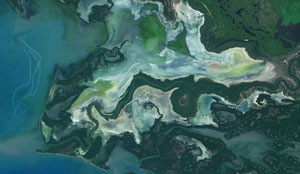
Marvellous Mangroves Curriculum The Marvellous Mangroves Curriculum begins with a simple philosophy – getting future generations to not only learn about, but understand the importance of mangrove forests. VISIT 
The award-winning Marvellous Mangroves (MM) curriculum educates children on the importance of mangroves and their ecological functions, teaching them about modern challenges and mechanisms for sustainability. VIEW VIDEO Marvellous Mangroves Curriculum in Bangladesh – WATCH VIDEO
MARVELLOUS MANGROVES IN BRAZIL
En Portuges 
Marvellous Mangroves – A Curriculum-Based Teachers Guide.
Like this newsletter? Pease consider donating to MAP to keep it going. Giving could never be easier 
“Question Your Shrimp” Campaign Question Your Shrimp – is it really sustainable? Sign the Petition
Note to Our Readers: We strive to keep active links in our newsletter. However, due to circumstances beyond our control, occasionally links to stories may become broken. If you find a link to a story is not functioning, please cut and paste the headline into your browser search bar. In most cases you should be able to locate the original story.
Not yet a MAP News subscriber?
Click here to subscribe.  *Articles in this newsletter may mention practices being used and/or show exagerated results being claimed without proof. Stories are presented here in effort to show mangrove related activity around the world and do not necessarily reflect Mangrove Action Project’s views or mangrove restoration best-practices. *Articles in this newsletter may mention practices being used and/or show exagerated results being claimed without proof. Stories are presented here in effort to show mangrove related activity around the world and do not necessarily reflect Mangrove Action Project’s views or mangrove restoration best-practices.
|

























